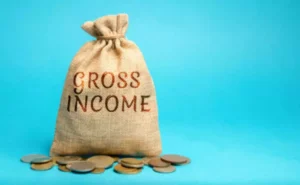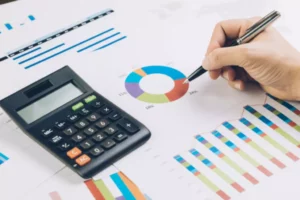Content

However, calculating salvage value helps all companies estimate how much money they can expect to get out of the asset when its useful life expires. Yes, salvage value can be considered the selling price that a company can expect to receive for an asset the end of its life. Therefore, the salvage value is simply the financial proceeds a company may expect to receive for an asset when its disposed of, though it may not factor in selling or disposal costs. It includes equal depreciation expenses each year throughout the entire useful life until the entire asset is depreciated to its salvage value.
What is tax basis salvage value?
Determining Salvage Value
The salvage value of an item is the price you can expect to receive if you sell it after you no longer have any use for it. The salvage value must be determined when you first acquire the property so its value can be correctly depreciated over its life expectancy for tax purposes.
Under most methods, you need to know an asset’s salvage value to calculate depreciation. If a company wants to front load depreciation expenses, it can use an accelerated depreciation method that deducts more depreciation expenses upfront. Many companies use a salvage value of $0 because they believe that an asset’s utilization has fully matched its expense recognition with revenues over its useful life.
Depreciation and Salvage Value Assumptions
This amount is carried on a company’s financial statement under noncurrent assets. On the other hand, salvage value is an appraised estimate used to factor how much depreciation to calculate. This method requires an estimate for the total units an asset will produce over its useful life. Depreciation expense is then calculated per year based on the number of units produced. This method also calculates depreciation expenses based on the depreciable amount.
The value of particular machinery (any manufacturing machine, engineering machine, vehicles etc.) after its effective life of usage is known as Salvage value. Generally, it is ideal for companies to calculate their assets’ residual value at each year’s end. If and when the estimated residual value changes, such changes https://www.bookstime.com/articles/how-to-calculate-salvage-value should be recorded accordingly. An asset’s residual value is determined based on the amount a company believes it will realise from the sale of the asset once its useful life or lease term ends. While different industries have different residual value formulas, the meaning of residual value does not change.
Depreciation Calculator
An estimated salvage value can be determined for any asset that a company will be depreciating on its books over time. Some companies may choose to always depreciate an asset to $0 because its salvage value is so minimal. In general, the salvage value is important because it will be the carrying value of the asset on a company’s books after depreciation has been fully expensed.

If you’re using the wrong credit or debit card, it could be costing you serious money. Our experts love this top pick, which features a 0% intro APR for 15 months, an insane cash back rate of up to 5%, and all somehow for no annual fee. You want your accounting records to reflect the true status of your business’s finances, so don’t wait until tax season to start thinking about depreciation. The Financial Accounting Standards Board (FASB) recommends using “level one” inputs to find the fair value of an asset. In other words, the best place to find an asset’s market value is where similar goods are sold, or where you can get the best price for it. When you’re using straight-line depreciation, you can set up a recurring journal entry in your accounting software so you don’t have to go in and manually prepare one every time.
Straight Line Depreciation Calculator
Types of property that may be recovered over their useful lifetime are including (but not limited to) building, machinery, equipment, and trucks. Simply, most of the property types that lose their value over the time (have zero or low salvage value) may be allowed to be recovered. On the other side, there are investments that can’t be deducted from income for tax purposes. Investing in a bank account or buying bookkeeping for startups land are the examples of this type. To calculate the annual depreciation expense, the depreciable cost (i.e. the asset’s purchase price minus the residual value assumption) is divided by the useful life assumption.






